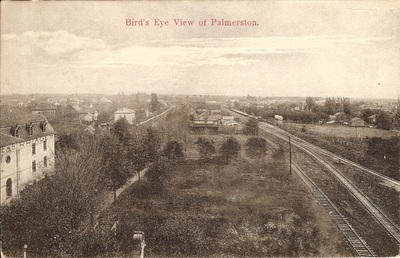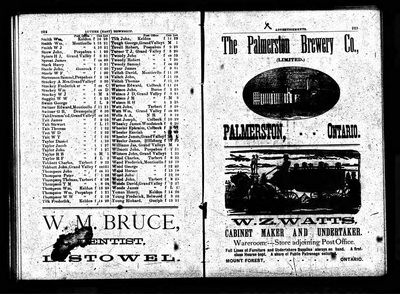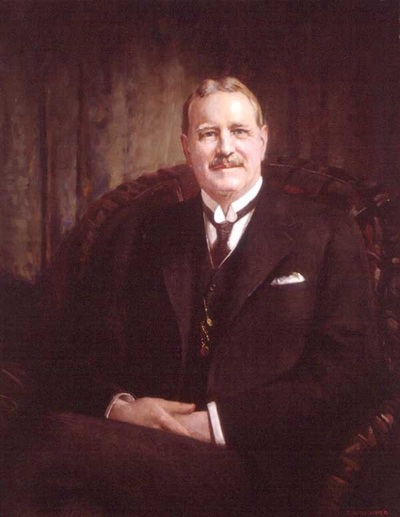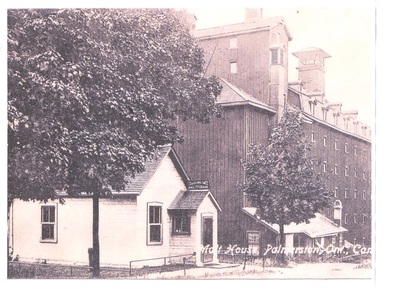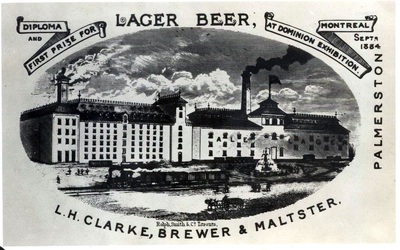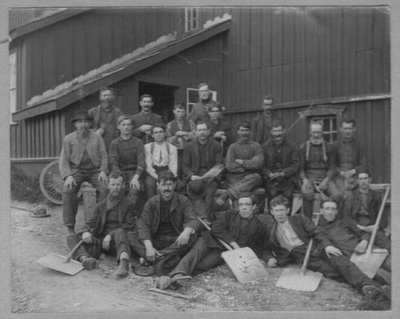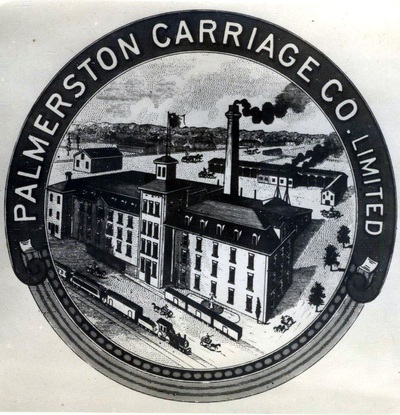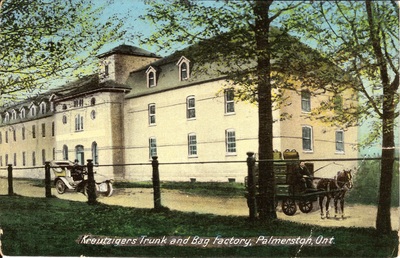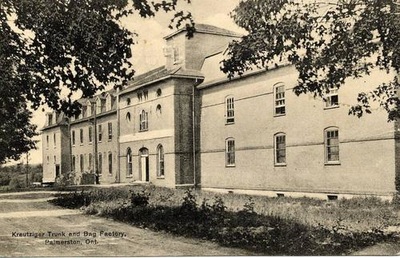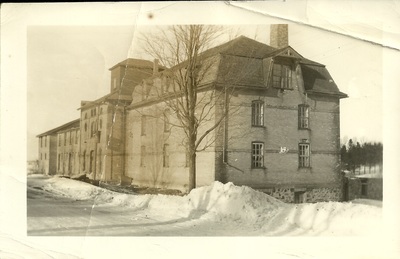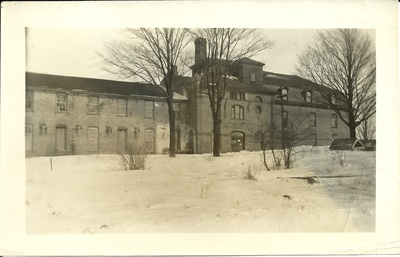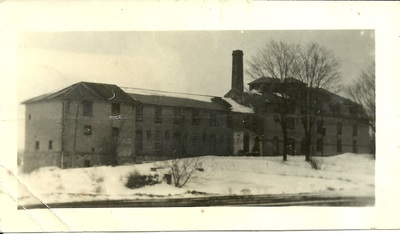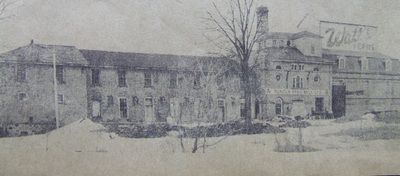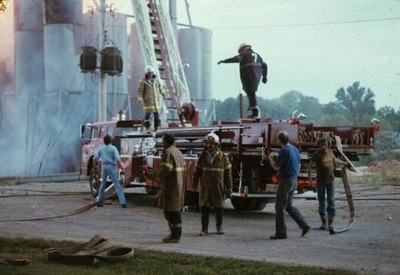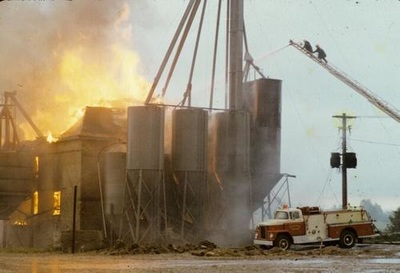Palmerston Brewery, Carriage Factory and Much More
|
In 1878 a young man of nineteen came to Palmerston with his father; their sights were set on establishing a grain business. Lionel Herbert Clarke and his father William knew of the opportunities presented by the rapidly growing agricultural community. Because the speed at which the railway could transport product, the Clarkes knew they would be able to cheaply acquire grains from the local farmers and still cheaply transport their product to the larger city markets.
Quickly the team worked on garnering support within the community, including convincing the town council in 1879 to pass a by-law exempting them from taxation for ten years. The young Lionel was enough of a progressive mind to order in the most advanced technology of the time. By connecting a new “telephone” from the Brewery office to the telegraph office, Lionel and William could conduct their business transactions quickly and efficiently. Their significant investments meant between 1878 and 1880 the L.H. Clarke Brewery had numerous buildings erected along Norman St. The Brewery, malt house and warehouses all played a major role in the production of what became the winner of the 1884 Dominion Exhibition.[i] The brewery itself was a major purchaser of not only grains from local suppliers, but also coal for the kilns, and wood for the keg and crate construction. Plus it became quickly known as a high paying and attractive employer.[ii] To date it is known that the brewery produced a Lager and a Stock Ale, while bottling was done in pint bottles, growlers and kegs. As Lionel advanced in his business trade, William established a prosperous tailor shop and continued to grow as prominent citizens within the community. In the late 1880s Lionel began advancing his career beyond the small community with the goal of spreading his product and connections in Ontario. 1888 saw Lionel join the Board of Trade in Toronto. By 1889 as the brewery peaked in its success Lionel established an office in Toronto and later partnered with Wilmot Deloui to begin the Canada Malting Company Ltd. As Lionel’s career grew into bigger and better things; including a couple of failed attempts in provincial politics. The Brewery suffered a major set back by losing the Malt House to fire, despite the efforts of the local volunteer fire brigade. Fortunately the brewery building went untouched, but Clarke decided to call it quits in Palmerston and move all his ventures to Toronto. After leaving Palmerston, Lionel continued in the grain and malt business expanding the operations to include malt houses in Montreal, Toronto, Winnipeg, Calgary and Thunder Bay. The combination of his expanding business connections, political aspirations and popularity as a community leader led to the culmination of this career and was appointed Lieutenant Governor of Ontario in November 1919. Lionel Clarke passed away the summer of 1921, but was said to have always been “a gentleman and a man of taste” by Premier Drury.[iii] |
Carriages, Trunks and a few Mushrooms
After the fire destroyed the Brewery Malt House, Lionel Clarke sold off the remaining buildings and property to the upstart business calling itself the Palmerston Carriage Company sometime around 1899-1900. Hugh Williams is listed as the original owner of the Palmerston Carriage Co. Williams quickly promoted the business as a manufacturer of “High Grade Vehicles,” even releasing a small catalog featuring the Handy Surrey; Concord Road Wagon and Corning Body.[i] The company itself quickly grew to employ forty people, however changing times and technology caused some major difficulties from which the company never recovered. Primarily the loss of employees to the railway made skilled labour hard to come by and afford. With the creation of the railway union, small manufacturers couldn’t compete with the higher wages being offered and many like the Palmerston Carriage Company suffered and were bought up. In this case, a consortium purchased the works and moved the factory to Mount Forest sometime in 1904. It was the same time that a proposal was presented to the town council to begin manufacturing cars in the carriage factory but that idea unfortunately fell through.
It’s not known exactly when the next operation took over the original brewery building but sometime between 1905 and 1913, the Kreutziger Trunk and Bag Factory moved in and began a business in the baggage industry. Aside from a few postcards dated in the 1909 time period, not much is known about the operations. Whether an original example of a Kreutziger Trunk, Bag or Suitcase has survived all this time is still unknown.
By 1914, according to the town insurance map, the Kreutziger Trunk and Bag Co. was in liquidation. Afterwards the building went through many different hands and had a variety of uses. From croquet balls to mushrooms, the Brewery (commonly known as the Trunk Factory by now) became derelict and was eventually put up for auction by the municipality after taking over ownership due to tax default. Numerous attempts to lure new industries to the building failed but E.S. Watt and Sons purchased the building in 1954 and used it as a feed processing facility until 1975 when it was sold to the Rundle family. The Rundles used the now century old building for feed processing and farm supply sales until the old Brewery building was lost to fire in the early 1980s.
After the fire destroyed the Brewery Malt House, Lionel Clarke sold off the remaining buildings and property to the upstart business calling itself the Palmerston Carriage Company sometime around 1899-1900. Hugh Williams is listed as the original owner of the Palmerston Carriage Co. Williams quickly promoted the business as a manufacturer of “High Grade Vehicles,” even releasing a small catalog featuring the Handy Surrey; Concord Road Wagon and Corning Body.[i] The company itself quickly grew to employ forty people, however changing times and technology caused some major difficulties from which the company never recovered. Primarily the loss of employees to the railway made skilled labour hard to come by and afford. With the creation of the railway union, small manufacturers couldn’t compete with the higher wages being offered and many like the Palmerston Carriage Company suffered and were bought up. In this case, a consortium purchased the works and moved the factory to Mount Forest sometime in 1904. It was the same time that a proposal was presented to the town council to begin manufacturing cars in the carriage factory but that idea unfortunately fell through.
It’s not known exactly when the next operation took over the original brewery building but sometime between 1905 and 1913, the Kreutziger Trunk and Bag Factory moved in and began a business in the baggage industry. Aside from a few postcards dated in the 1909 time period, not much is known about the operations. Whether an original example of a Kreutziger Trunk, Bag or Suitcase has survived all this time is still unknown.
By 1914, according to the town insurance map, the Kreutziger Trunk and Bag Co. was in liquidation. Afterwards the building went through many different hands and had a variety of uses. From croquet balls to mushrooms, the Brewery (commonly known as the Trunk Factory by now) became derelict and was eventually put up for auction by the municipality after taking over ownership due to tax default. Numerous attempts to lure new industries to the building failed but E.S. Watt and Sons purchased the building in 1954 and used it as a feed processing facility until 1975 when it was sold to the Rundle family. The Rundles used the now century old building for feed processing and farm supply sales until the old Brewery building was lost to fire in the early 1980s.

